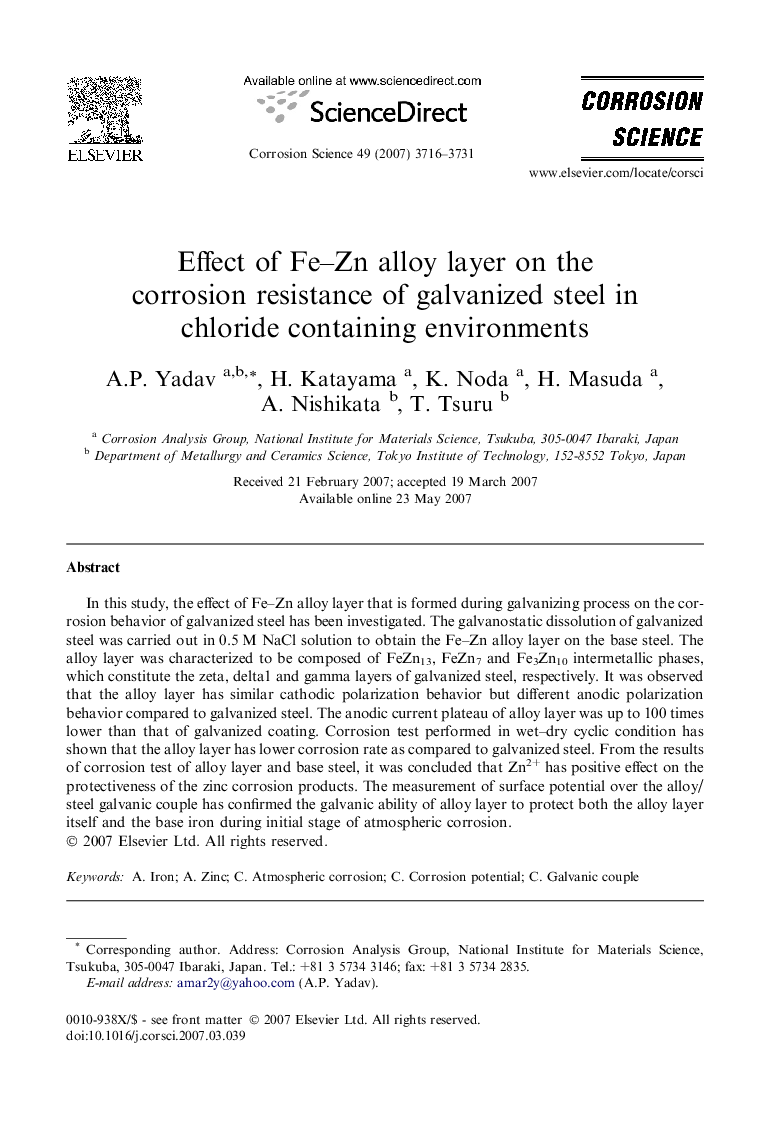| Article ID | Journal | Published Year | Pages | File Type |
|---|---|---|---|---|
| 1471729 | Corrosion Science | 2007 | 16 Pages |
In this study, the effect of Fe–Zn alloy layer that is formed during galvanizing process on the corrosion behavior of galvanized steel has been investigated. The galvanostatic dissolution of galvanized steel was carried out in 0.5 M NaCl solution to obtain the Fe–Zn alloy layer on the base steel. The alloy layer was characterized to be composed of FeZn13, FeZn7 and Fe3Zn10 intermetallic phases, which constitute the zeta, delta1 and gamma layers of galvanized steel, respectively. It was observed that the alloy layer has similar cathodic polarization behavior but different anodic polarization behavior compared to galvanized steel. The anodic current plateau of alloy layer was up to 100 times lower than that of galvanized coating. Corrosion test performed in wet–dry cyclic condition has shown that the alloy layer has lower corrosion rate as compared to galvanized steel. From the results of corrosion test of alloy layer and base steel, it was concluded that Zn2+ has positive effect on the protectiveness of the zinc corrosion products. The measurement of surface potential over the alloy/steel galvanic couple has confirmed the galvanic ability of alloy layer to protect both the alloy layer itself and the base iron during initial stage of atmospheric corrosion.
